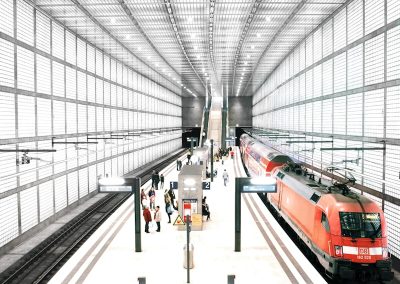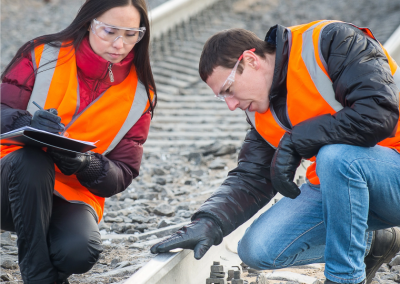Europe must take decisive steps to simplify and modernise its rail systems to strengthen competitiveness,...
The Challenge
As train functions and passenger needs evolve, there is an increasing need for an updated TCMS architecture. However, there’s a considerable technology gap between today’s TCMS and the envisioned Next Generation Train Control Monitoring System (NG-TCMS).


How we do this?
To help fill this gap, the Train Control and Monitoring System Technical Demonstrator (TD) was delivered. The demonstrator conducted an extensive amount of research, development, modelling, and testing – a process that ultimately resulted in several new NGTCMS enabling technologies.
- Wireless TCMS
- Next generation Train Communication Network (NG-TCN)
- Functional Open Coupling (FOC)
- Function Distribution Framework (FDF)

Systems using TCMS require their own set of electronic end equipment, adding extra weight and consuming valuable space
The key enabling technologies coming from the demonstrator bring change and pave the way towards a next generation TCMS (NG-TCMS)
Key enabling technologies
Wireless TCMS
Next generation Train Communication Network (NG-TCN)
Functional Open Coupling (FOC)
Function Distribution Framework (FDF)
Description
Wireless train backbone, wireless consist network and standardised and secure train-toground (T2G) links
SIL4 communications to support the drive-by-data (DbD) concept
Communication mechanism that allows the coupling of two or more consists regardless of their manufacturer
Comprising of middleware that abstracts applications running on top of it from the underlying hardware and communications
Who benefits
Railway operators
Suppliers
Railway operators
Suppliers
Railway operators
Infrastructure managers
Suppliers
Railway operators
Suppliers
The benefits of NG-TCMS
NG-TCMS will:
- Replace legacy communication systems with Ethernet or wireless technologies
- Simplify the overall network architecture and replace conventional train lines
- Use safety critical functions up to safety integrity level (SIL) 4
- Use time-critical functions that require low latency and low jitter
- Create a single network to interconnect all on-board equipment, including TCMS, signalling, brakes, CCTV, and entertainment services
- Ensure interoperability between rail vehicles from different suppliers and operators
Did You Know?
TCMS require over 10 km of cabling for each 20 m railcar.
Key Finding
Systems using TCMS require their own set of electronic end equipment, adding extra weight and consuming valuable space.
Fast Fact
Different units cannot be coupled together, preventing interoperability between different vehicles and limiting operational flexibility.



























